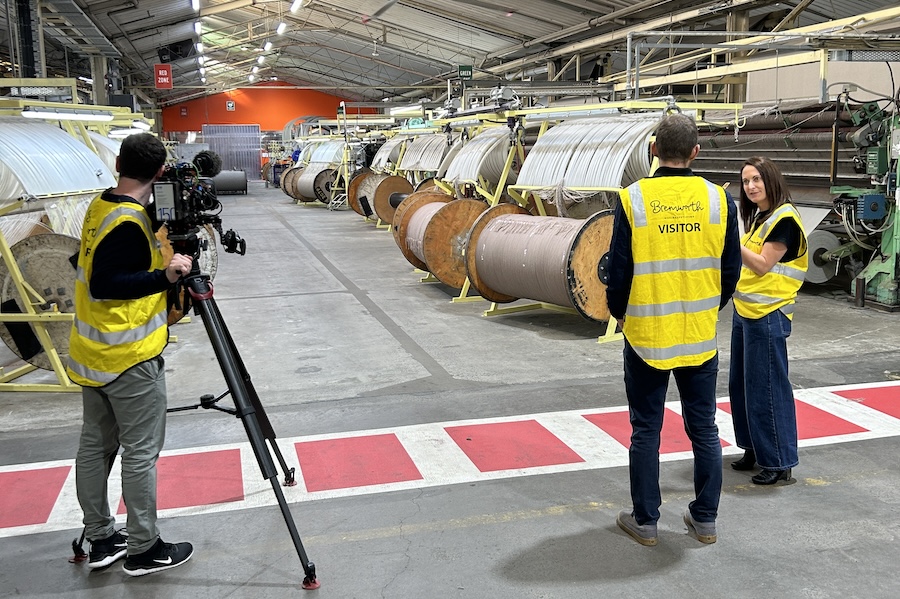New Zealand’s wool sector is set to benefit from exposure to an international TV audience of millions, according to an industry expert.
A German documentary team is in the country this week filming at wool carpet manufacturer Bremworth and will also be interviewing wool processing and farming industry representatives in other parts of New Zealand.
The Association of Public Broadcasting Corporations in the Federal Republic of Germany (ARD), is the largest public broadcasting network in the world. The new documentary will be produced for its flagship Das Erste(The First) channel. Around 50 million people, approximately 60% of Germany’s population, watch Das Erstelive to air every week.
Greg Smith, CEO of Bremworth, says the producers approached the company having seen details of their move to eliminate 2,500 tonnes annually of synthetic yarn from the production of carpets and replace them with New Zealand wool.
He says Germany is seen as one of the world’s most environmentally conscious countries and their interest in how New Zealand is transforming its wool sector to meet growing global demand for natural fibres, could help open new export channels in the EU’s largest population centre.
 Smith says the 71-year-old Das Erste is seen as Germany’s most credible TV network and the exposure in the eight-minute documentary would be otherwise cost-prohibitive for them to access.
Smith says the 71-year-old Das Erste is seen as Germany’s most credible TV network and the exposure in the eight-minute documentary would be otherwise cost-prohibitive for them to access.
“New Zealand’s wool and animal hair fibre product exports to Germany are around $6m annually.
“This makes it a relatively untapped market for us and presents a significant opportunity within a well-aligned consumer group that is highly focused on sustainable living.
“A 15-second spot on Das Erste would cost $225,000 meaning the value of this eight-minute documentary to New Zealand’s wool sector is around $7.2 million,” he says.[3]
ARD German Television correspondent Florian Bahrdt says strong wool production is one of the most traditional sectors of the New Zealand economy.
“We’ve travelled the country from farms to factories to show our German audience the many challenges faced by the industry as it combats competition from synthetic fibres and strives to maintain its agricultural heritage,” he says.




